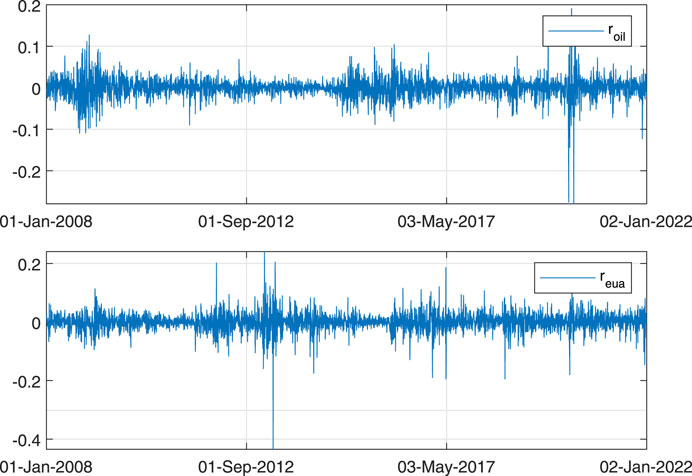Investing in the oil industry has always been an attractive option for investors looking to capitalize on its potential for high returns. However, traditional methods of investing in oil, such as buying stocks or futures contracts, come with their fair share of risks and complexities.
This is where Brent Crude ETFs (Exchange-Traded Funds) have emerged as a game-changer.
Introduction to Brent Crude ETFs
Brent Crude ETFs are investment vehicles that allow investors to gain exposure to the price movements of Brent crude oil without owning the commodity. These funds trade on stock exchanges and aim to replicate the performance of a specific index or benchmark tracking the price of Brent crude oil.
Investing in Brent Crude ETFs offers diversification, liquidity, and convenience compared to direct ownership of physical oil. These ETFs provide transparency through regular disclosure of holdings, allowing investors to track performance and evaluate potential returns and risks.
It’s important to note that while Brent Crude ETFs aim to replicate price movements, they may not perfectly match due to factors like management fees and tracking errors. Therefore, thorough research is crucial before investing in specific funds.
Explanation of the Growing Popularity of Brent Crude ETFs
The popularity of Brent Crude ETFs has surged in recent years among investors. These funds offer a convenient and cost-effective way to invest in oil, with easy entry and exit points compared to traditional methods.
Additionally, they provide diversification within the energy sector, allowing investors to gain exposure to various companies involved in exploration, production, refining, and distribution.
With rising global energy demand and the flexibility of trading on stock exchanges, Brent Crude ETFs have become an attractive investment option for those seeking to capitalize on market opportunities and manage risk effectively.
How Brent Crude ETFs Have Revolutionized Oil Investments
Brent Crude ETFs have revolutionized oil investments by offering unprecedented flexibility and accessibility. These funds can be bought and sold like stocks, allowing investors to adjust their positions quickly based on market conditions.
With daily disclosure of holdings, investors have transparency and can make informed decisions about their portfolios. Brent Crude ETFs provide exposure to the global oil market without the need for direct investment in physical barrels.
This revolution has democratized oil investments, opening up opportunities for individual investors to participate in this previously exclusive market.
Definition and Characteristics of Brent Crude Oil
Brent crude oil is a light, sweet crude oil extracted from oil fields in the North Sea, between Norway and the United Kingdom. It is known for its low sulfur content, making it easy to refine into gasoline and other petroleum products.
As a benchmark for pricing oil worldwide, Brent crude’s consistent quality allows for fair market prices and seamless trading. Its geographic origin and favorable refining properties contribute to its significance in the global energy market.
| Characteristics | Description |
|---|---|
| Sulfur Content | Low |
| Density | Relatively low |
| Geographic Origin | North Sea (between Norway and UK) |
| Refining Properties | Ideal for gasoline and petroleum products |
Exploration of Global Demand and Supply Dynamics for Brent Crude Oil
The demand for Brent crude oil is influenced by economic growth, industrial production, transportation needs, and geopolitical events. Any disruptions in supply or changes in demand can significantly impact its price.
Keeping an eye on global economic trends, political developments, and technological advancements is crucial to understand the dynamics of Brent crude oil’s supply and demand. Economic growth drives demand, industrial production affects energy needs, transportation plays a significant role, and geopolitical events create uncertainty.
On the supply side, global economic trends, political stability or unrest, and technological advancements impact production capabilities. Monitoring these factors provides valuable insights into potential price fluctuations in this dynamic market.
Factors Influencing Price Fluctuations of Brent Crude Oil
Price fluctuations of Brent crude oil are influenced by several key factors. These include changes in global oil production levels, geopolitical tensions in major oil-producing regions like the Middle East, OPEC decisions on production quotas, and weather conditions that can disrupt exploration and transportation activities.
Global oil production levels play a significant role in determining prices. Increases in production lead to oversupply and lower prices, while decreases or disruptions result in higher prices due to supply constraints. Geopolitical tensions in oil-producing regions can also cause volatility and potential supply disruptions.
OPEC decisions on production quotas directly impact global supply and demand balance and subsequently affect Brent crude oil prices. Lastly, weather events like hurricanes or storms can disrupt operations, leading to temporary supply shortages and price increases.
Understanding these factors is crucial for investors interested in Brent Crude ETFs as it allows them to anticipate price movements and make informed investment decisions. By staying informed about global production levels, geopolitical tensions, OPEC decisions, and weather forecasts, investors can adjust their strategies accordingly.
Advantages of Investing in ETFs over Traditional Investment Vehicles
Investing in ETFs offers several advantages over traditional investment vehicles like mutual funds or individual stocks. Firstly, ETFs provide instant diversification by holding a basket of assets within a specific sector or index, reducing the risk associated with investing in individual securities.
Secondly, ETFs offer liquidity, allowing investors to buy or sell throughout the trading day at market prices, enabling quick reactions to changing market conditions. Additionally, ETFs are transparent, with daily disclosure of holdings, and often have lower expense ratios compared to mutual funds.
They also offer tax efficiency and accessibility to various markets and asset classes that may be otherwise difficult to access directly. Overall, ETFs provide a flexible and diversified investment strategy for investors.
Benefits Specific to Investing in Brent Crude ETFs
Investing in Brent Crude ETFs provides unique advantages for the energy sector. These ETFs offer diversification opportunities within the industry, exposing investors to various companies involved in energy-related activities such as exploration, production, refining, and pipeline operations.
By investing in an energy-specific index, investors can diversify their portfolios and reduce risk.
Compared to direct investments in oil futures or stocks, Brent Crude ETFs offer lower risk exposure. Investing directly in oil can be risky due to price volatility and company-specific risks.
However, by investing in a basket of energy-related assets through an ETF, investors can spread their risk across multiple holdings and minimize the impact of poor performance from any single security.
In Part II of this article, we will explore different types of Brent Crude ETFs available and how they operate within the market. We will also discuss key performance metrics for evaluating fund performance and strategies for successful investing in Brent Crude ETFs.
[lyte id=’7rcmT2IiOuU’]







